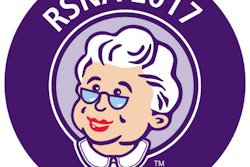
Despite conflicting breast cancer screening guidelines, more than 80% of primary care providers and gynecologists continue to recommend that their patients start mammography screening at age 40, according to a research letter published online April 10 in JAMA Internal Medicine.
The findings demonstrate that despite years of debate on the issue, there's no consensus among physicians about when women should begin breast cancer screening and how often they should have it, wrote a team led by Dr. Archana Radhakrishnan of Johns Hopkins University.
"We ... found sharp differences in recommendations based on which guidelines physicians trusted most, which may suggest that current practices reflect both varying adherence to guidelines as well as differences in which guidelines are trusted," the group wrote (JAMA Intern Med, April 10, 2017).
The findings drew a frustrated response in an editorial written by two researchers who in the past have questioned the wider use of breast screening, Dr. Deborah Grady and Dr. Rita Redberg, both of the University of California, San Francisco. Grady and Redberg called the findings "dispiriting."
Dueling dictums
In January 2016, the U.S. Preventive Services Task Force (USPSTF) released an updated breast cancer screening guideline that hewed to its previous recommendation in 2009, which suggested personalized screening decisions for women between the ages of 40 and 49 and biennial screening for women between the ages of 50 and 74.
The previous year, the American Cancer Society (ACS) had revised its guidelines, encouraging personalized screening decisions for women ages 40 to 44, annual screening at age 45, and biennial screening at age 55 or older. Yet other medical societies, including the American College of Radiology (ACR) and the American Congress of Obstetricians and Gynecologists (ACOG), have continued to recommend annual mammograms for women 40 and older.
So how do primary care doctors and gynecologists make sense of these different guidelines? To address this question, Radhakrishnan and colleagues used data from 871 surveys distributed between May and September 2016 to physicians randomly sampled from an American Medical Association physician master file.
The survey asked physicians whether they typically recommend routine screening mammograms to women with no family history of breast cancer, in what age groups, and in what intervals; it also asked physicians to indicate which professional mammography screening guidelines they most trusted. It did not explicitly ask whether physicians engaged their patients in personalized decision-making conversations about breast cancer screening.
Of the total participants, 44.2% were family medicine/general practice physicians, 29.7% were internal medicine physicians, and 26.1% were gynecologists. More than half of survey respondents had over 20 years of experience, according to the researchers.
They found that a high percentage of physicians recommended breast screening outside of the USPSTF recommended age range of 50 to 74. A majority also recommended annual screening, despite the USPSTF's preference for screening every two years.
| Percent of physicians who recommend breast screening | |||
| Ages 40-44 | Ages 45-49 | Ages 75 and older | |
| Percent of physicians who recommend any breast screening | 81% | 88% | 67% |
| Percent who recommend annual screening | 62.9% | 66.7% | 52.3% |
Of the three major organizations recommending screening that were included in the survey, the USPSTF came in last as the organization that physicians trusted the most. Survey participants trusted ACOG's guidelines the most, at 26%, while 23.8% trusted ACS guidelines the most and 22.9% trusted USPSTF guidelines the most.
Finally, those who trusted ACOG and ACS guidelines the most were much more likely to recommend screening to younger women, compared with those who trusted USPSTF guidelines (ACOG = 92.9%, ACS = 86.5%, USPSTF = 60.8%, for women 40 to 44; ACOG = 95.6%, ACS = 94.7%, and USPSTF = 72.4%, for women 45 to 49).
Inexplicable and dispiriting?
In the editorial that accompanied the letter, Grady and Redberg wrote that the physician behavior outlined in the study findings was inexplicable and even "dispiriting."
"In our view, the most evidence-based, transparent, and conflict-free guidelines are from the USPSTF," they wrote. "However ... physicians inexplicably trusted other guidelines more than the USPSTF, which is publicly funded, uses strict methods, and carefully supports recommendations with evidence. Perhaps those who responded to this online survey ... are not representative of U.S. primary care physicians in general."
Even if physicians' recommendations for early mammography screening come from good intentions, doctors must face the fact that screening mammography can cause more harm than benefit, according to Grady and Redberg. In fact, the idea that mammography screening in younger women saves lives is erroneous, they wrote.
"We believe that when physicians say they are doing what patients want when ordering unnecessary testing, [they] are failing to acknowledge that patients usually want what we as physicians tell them is good for them," they wrote. "However, at least some physicians are inaccurately advising women that mammograms at age 40 can save lives and are not offering any informed discussion of risks and benefits."
For the record, the USPSTF's official statement on screening women ages 40 to 49 does acknowledge a mortality benefit from breast screening. The group, however, declined to recommend screening in these women because that benefit is smaller than the one in women 50 to 74, and it might not offset the harms that may arise from screening.
"While screening mammography in women aged 40 to 49 years may reduce the risk for breast cancer death, the number of deaths averted is smaller than that in older women and the number of false-positive results and unnecessary biopsies is larger," the USPSTF statement says. "The balance of benefits and harms is likely to improve as women move from their early to late 40s."



















